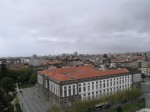“Levadas” are aqueducts in Madeira Island built in order to bring water from the North of the Island where it is abundant to the South where the main colonization of the Island has always taken place. Besides carrying water the Levadas also create walk trails in the landmass of Madeira that are the best ways to explore the natural wealth of this island. You’ll be able to see the laurisilva endemic forest (UNESCO World Heritage, 1999) with trees like Ocotea foetens, Laurus azorica or Persea indica and also birds like the Trocaz Pigeon or the Pterodroma madeira and others.
There are many trails with different difficulty ratings, I don’t know yet if I’m going to post specifically about different levadas later but it is easy to find the information on any of the hotels or tourism centers in the island.
Most of these trails will take several hours to complete and go across remote parts of the island so you shouldn’t go alone in case you get hurt or need medical assistance for some reason.
- Lagoa do Vento 01
- Lagoa do Vento 02
- Lagoa do Vento 03
- Caldeirão Verde 01
- Caldeirão Verde 02
- Caldeirão Verde 03
Special thanks to Carolina for the photos.
“Caldeirão Verde” means Green Cauldron; “Lagoa do Vento” means Wind Lagoon
There aren’t snakes or any other dangerous animals in the Island.
Helpful Links: MadeiraNature.com
Other interesting links: MadeiraIsland.travel; Youtube (levada video); Madeira 1st post





















